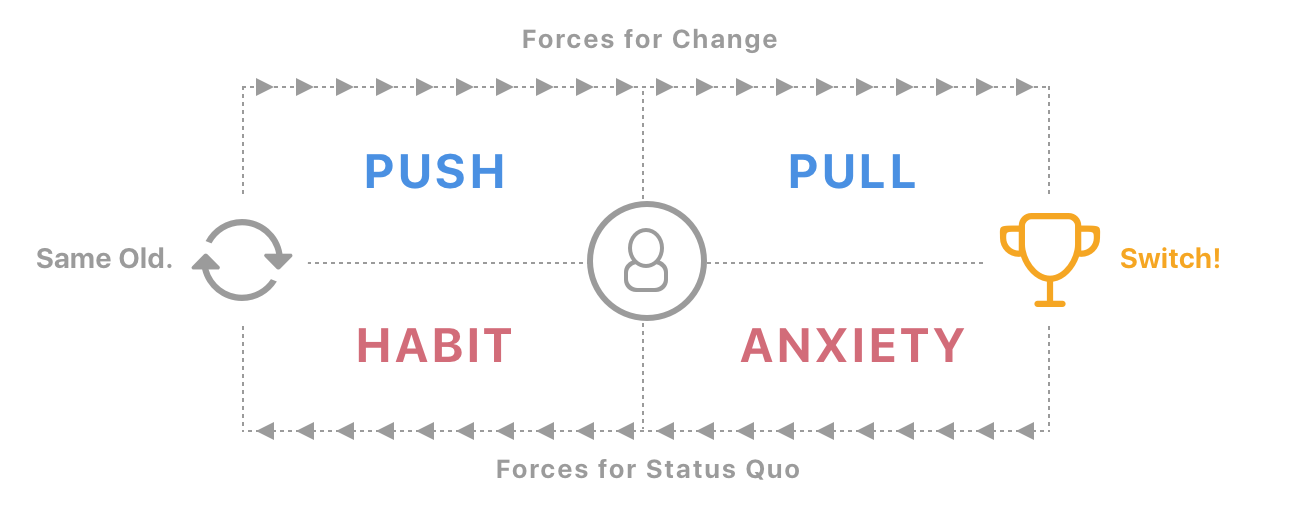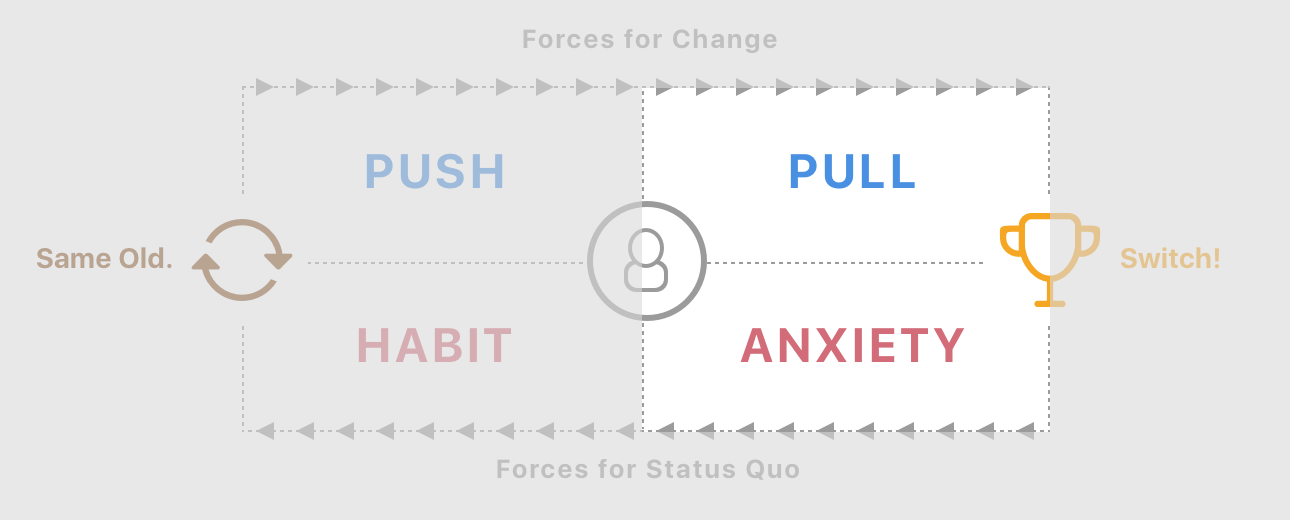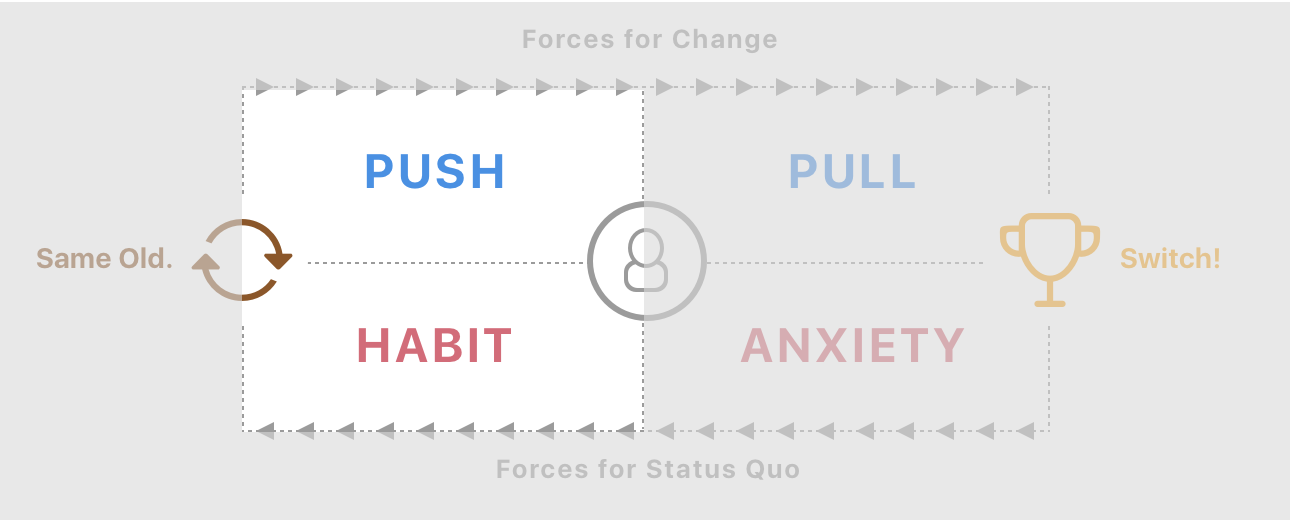When someone is deciding between sticking with their current solution or switching to a new offer, they find themselves weighing their decisions against the forces of Push, Pull, Anxiety, and Habit.
If you can understand how those forces affect your customers’ decisions, you can sign up more new customers and keep your existing buyers around longer.
I originally posted this short video to LinkedIn, but I'll share it here as well in case you'd rather watch than read:
The Forces of Progress

When someone is deciding between sticking with their current solution or switching to a new offer, they find themselves in the middle that image, experiencing the forces of Push, Pull, Anxiety, and Habit.
And if Push + Pull is greater than Anxiety + Habit, they'll switch!
If not, then the benefits of the new thing aren't worth the perceived pain of change.
Make sense?
Push is everything your current situation is doing that drives you crazy. It's the classic infomercial "There's Got to Be a Better Way!" feeling.
Pull is the promise of the new situation. The grass is greener on the other side. That new thing over there looks way better than what you're currently doing.
Anxiety is that nagging fear that you'll end up with Buyer's Remorse. What if it isn't as good as they're making it out to be? And what if learning the new thing turns out to be super hard? What if you end up spending all the time learning the new thing that it was supposed to save you?
Habit is telling you, "Look, maybe our current solution isn't perfect, but at least we understand it. It might be a mess, but it's our mess."
Customer Acquisition
Acquisition: Increase Pull and Reduce Anxiety
When we're thinking about how these forces affect Customer Acquisition you only have total control over the right half of the diagram:

You can't make your potential users' current solution push them away and you don't have an influence over the habits they've developed.
But! You can sure as heck pull them toward you and reduce any anxieties you know about.
What are people worried about that's keeping them from giving you a try? Surface those fears through interviews and see if there isn't a way to design a solution. For example, if you're a CRM trying to pry a customer away from their existing system, create an automated process for importing their data and let them test out 100 rows for free.
Customer Retention
Retention: Reduce Push and Increase Habit
And in terms of Customer Retention, you have more control over the left-hand side of the model.

Reduce push by, you know, not sucking 😂.
Increase your customers' habits by finding ways to deepen the sense of familiarity your customers feel toward your service.
Nothing shady and no dark patterns like locking up their data, but the goal of increasing DAUs is directly related to the effect that entrenched Habits have on the equation.
Conduct Some Interviews and Use the Forces of Progress Cheatsheet in my Resource Library
To make this Forces of Progress model actionable, you're gonna need some data!
So, line up some customer interviews and use the "Forces of Progress Interview Template" I've shared in my [JTBD Library](/jobs-to-be-done-resource-library/). As you talk to your customers about their experience in using your product, listen for the stories they share and how they relate to each of the four forces.
Find ways to use that information to decrease churn, increase retention, and grow your business!

